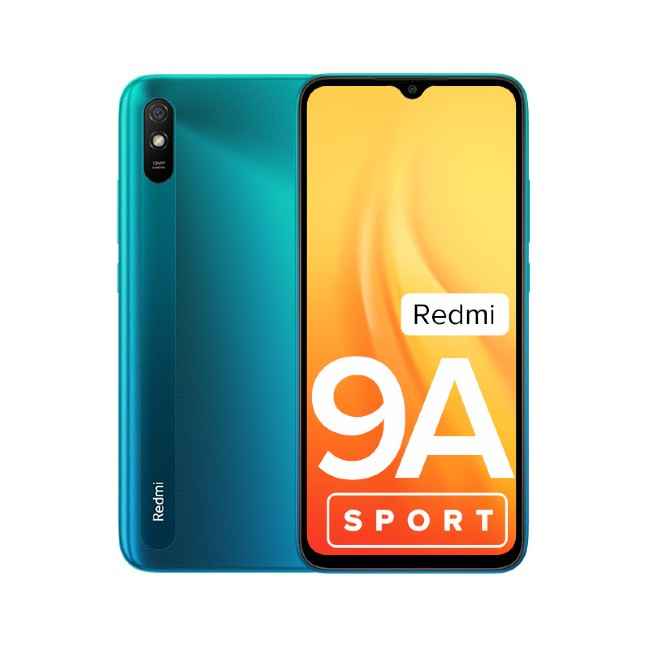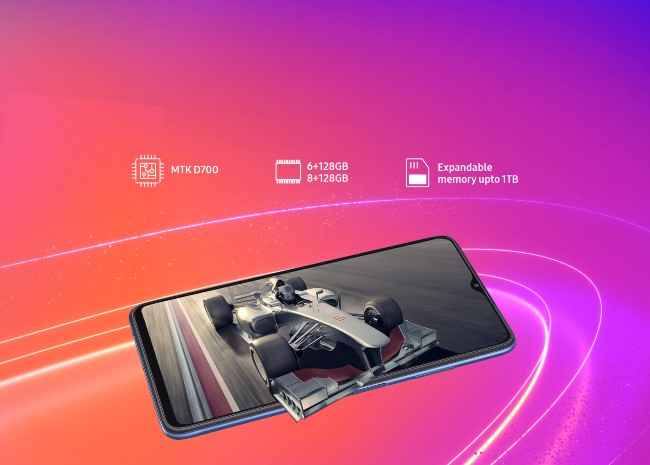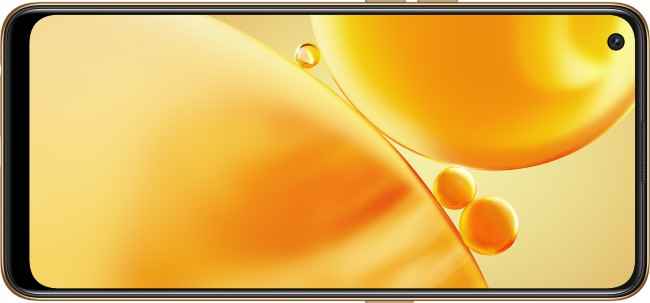
Thursday, 30 September 2021
Nintendo denies rumours of Switch Pro https://www.digit.in shrey.pacheco@digit.in (Shrey Pacheco) Nintendo recently unveiled a new version of its popular Switch console called the Switch OLED. The new version offered an OLED display with thinner bezels, larger internal storage and more. However, there were initial reports that the Japanese company was planning to launch an even more powerful version of its console with support for 4K gaming. With the launch of the Switch OLED, it looks like those rumours were nothing more than that. Or was it? A report by Bloomberg seems to suggest that the ‘Switch Pro’ may have existed, at least for a time. The publication claims that 11 game companies were in possession of Nintendo’s 4K development kit for the Switch. It further adds that these companies were from all around the globe and ranged from large publishers to small studios. The report calls out Zynga Inc. as being one of the companies. Nintendo refutes rumours However, since the story has been published, both Zynga and Nintendo have tried to squash the rumours. Zynga spokesperson, Sarah Ross, stated, “to clarify, Zynga does not have a 4K developer kit from Nintendo.” Bloomberg also claims to have reached out to Nintendo with a list of questions. The Japanese company responded by stating that Bloomberg’s reporting is “inaccurate,” but declined to specify which parts of the information it was referring to. Nintendo has also posted a tweet refuting the rumours. The company notes that the “report is not true”. It further added that it has “no plans” to launch a new model other than the Nintendo Switch OLED. A news report on Sept. 30, 2021(JST) falsely claims that Nintendo is supplying tools to drive game development for a Nintendo Switch with 4K support. To ensure correct understanding among our investors and customers, we want to clarify that this report is not true. (1/2) — 任天堂株式会社(企業広報・IR) (@NintendoCoLtd) September 30, 2021 https://ift.tt/eA8V8J October 01, 2021 at 02:17AM

The Redmi 9A Sport and Redmi 9i Sport have both been launched in India: Specifications and Price https://www.digit.in editor@digit.in (Kajoli Anand Puri) Redmi has launched two new smartphones in India, the Redmi 9A Sport and Redmi 9i Sport. As far as the specifications go, the two smartphones are identical to the Redmi 9A and Redmi 9i, with just one key difference. The new phones have a P2i coating and this makes them splashproof. Redmi 9A Sport Specifications The Redmi 9A has a 6.53-inch HD+ LCD display with a water drop-style notch. It runs on an octa-core MediaTek Helio G25 SoC,along with an upto 3GB RAM. It has a 13MP rear camera with an f/2.2 aperture, along with a 5MP snapper with an f/2.2 aperture at the front. The smartphone has a 5,000mAh battery that supports 10W fast charging. The phone also supports AI face unlock. Redmi 9i Sport Specifications The Redmi 9i Sport has a 6.53-inch HD+ display. It runs on a MediaTek Helio G25 SoC paired with 4GB RAM and comes with up to 128GB storage. The smartphone has a 13MP rear sensor. On the front, it has a 5MP camera for selfies and video calls. The phone has a 5,000mAh battery that supports 10W fast charging. Redmi 9i Sport and Redmi 9A Sport price in India The new Redmi 9i Sport is priced at Rs. 8,799 for the 4GB RAM + 64GB storage option and Rs. 9,299 for the 4GB RAM + 128GB storage model. The Redmi 9A Sport is priced in India at Rs. 6,999 for the 2GB RAM + 32GB storage and Rs. 7,999 for the 3GB RAM + 32GB storage option. Also Read: Goodbye Mi branding, Xiaomi’s premium devices to be renamed under the ‘Xiaomi’ brand https://ift.tt/2WoV2UI September 30, 2021 at 03:46PM

Samsung Galaxy F42 5G launched in India: Check price & specifications https://www.digit.in editor@digit.in (Rajashree Panda) Samsung has launched the Galaxy F42 5G, the company's first 5G smartphone in the F series, in the Indian market. The smartphone has a 64MP triple camera with night mode, a 6.6-inch FHD+ display with a 90Hz refresh rate, and compatibility for 12 different 5G bands. In India, the Samsung Galaxy F42 5G is available for a starting price of Rs 20,999. A variant with 8GB of RAM and 128GB of storage will cost you Rs 22,999 (approximately). Announcing the launch of #GalaxyM52 5G in India, our #LeanestMeanestMonsterEver. Read all details here: https://t.co/rrevOb13Gi #Samsung pic.twitter.com/aidlBlk0Eo — SamsungNewsroomIN (@SamsungNewsIN) September 28, 2021 Samsung's Galaxy F41 is a mid-range smartphone that is somewhat more expensive than the Galaxy F41. It is intended to replace the Galaxy F41. To name a few highlights, these include a 5G chipset, Dolby Atmos support, and an HDR display. Samsung F42 availability In association with Flipkart's Big Billion Days promotion, the phone will be available for purchase on October 3 through the Samsung Online Store. It will also be available at certain retail locations and Flipkart's website. The phone will be available for reduced pricing of Rs 17,999 (6GB/128GB) and Rs 19,999 (8GB/128GB) for a limited time only. There will be two matte colours available: matte black and aqua matte for the smartphone. Galaxy F42 5G Specifications On top of Android 11 and One UI 3.0, the Samsung Galaxy F42 5G comes with a 6.6-inch full HD+ display with a 90Hz refresh rate and a waterdrop notch. High-speed data transfer is now feasible, all thanks to the introduction of LTE Cat. 6 technology. The MediaTek Dimensity 700 SoC can support up to 8GB of RAM in certain devices. For depth perception, the smartphone includes a 2-megapixel depth sensor in addition to a 64-megapixel main camera. Additional features of the camera system on the rear include Hyperlapse, Slow Motion filming modes, Food, Night, Panorama, and Pro modes. Samsung F42: Additional features The Samsung Galaxy F42 5G's front-facing 8-megapixel camera sensor comes quite handy for shooting selfies and video chatting with friends and family. Additionally, a fingerprint sensor is integrated into the device's side panel. Dolby Atmos compatibility allows users to enjoy a more immersive audio experience with their wired or wireless headphones. Furthermore, the phone measures 167.2x76.4x9.0mm in size! Let us see how this new launch of Samsung will roll over in the market. Till then, stay connected to Digit. Disclaimer: This article has been authored by a member of our Digit Squad community. https://ift.tt/3kS3Bks September 30, 2021 at 03:42PM

Oppo F19s, Reno6 Pro 5G Diwali Edition and Enco Earbuds have hit Indian shores https://www.digit.in editor@digit.in (Kajoli Anand Puri) With the festive season approaching, a few brands have launched new offerings to entice customers. These offerings include the Oppo F19s, Oppo Reno 5G Diwali Edition and a new colour option for the Oppo Enco Buds. OPPO F19s specifications OPPO F19s is the newest entrant in the F19 series offered by Oppo, and it looks nearly identical to the Oppo F19. It has a 6.43-inch FHD+ AMOLED display with a 60Hz refresh rate, 1,080×2,400 pixels resolution. The OPPO F19s is powered by the Qualcomm Snapdragon 662 SoC paired with Adreno 610 GPU. It has a 6GB LPDDR4x RAM, with RAM expansion support of up to 11GB and native 128GB internal storage that is further expandable. It packs a 5,000mAh battery with 33W fast-charging support. It has a triple camera setup with a 48MP primary sensor with f/1.7 aperture and a couple of 2MP lenses for depth and macro sensors with f/2.4 aperture. It also has a 16MP front camera. Oppo Reno Pro 5G Diwali Edition Specifications The OPPO Reno6 Pro Diwali Edition runs on a MediaTek Dimensity 1200 chipset coupled with up to 12GB RAM and 256GB expandable storage.The OPPO Reno6 Pro has a 6.55-inch FHD+ AMOLED display with a 90Hz refresh rate and 2,400 x 1,080 pixels resolution. It has a triple camera setup with a 64MP primary sensor, an 8MP wide-angle lens, and a 2MP macro lens. It also has a 32MP snapper on the front for selfies and an in-display fingerprint sensor. Oppo Enco Buds Specifications OPPO Enco Buds deliver a claimed 24 hours of battery life on a single charge, with each earbud delivering up to six hours of the battery. It has a 40mAh battery. They are IP54 rated for dust and water resistance. The Oppo Enco Buds are equipped with Bluetooth 5.2. Read our official reviews on Oppo phones to know whether you should buy these. Also Read: Oppo ColorOS 12 based on Android 12 unveiled; list of supported Oppo, OnePlus devices revealed https://ift.tt/3uocVjb September 30, 2021 at 03:40PM

Your Gmail avatar is about to get much brighter https://www.digit.in editor@digit.in (Kajoli Anand Puri) If you’ve always felt a little restricted by the options available to you for your Gmail photos, you’ll be glad to know that Gmail’s latest update is going to help you get a brighter, more customised avatar. Google announced the availability of these avatars on Monday, stating that they are more inclusive and easy to tweak so that users can represent themselves the way they want to. What are Gmail Avatars? Gmail avatars are little pictures that show up on your Gmail ID. These pictures are called Google Illustrations, and are available within a variety of styles and colours for users to pick and choose. These Gmail avatars are a great option for those who want some form of representation on their Gmail ID, but are not comfortable with putting photographs of themselves. In fact, there are many cultures where sharing photographs of one’s face is frowned upon, especially for women, and this move might help customers from such cultures feel adequately represented on the emailing app. How do Gmail Avatars work? You can choose from a range of categories such as space, animals, instruments, gardening, beaches, team sports, mountains, games, historical sites and more. In order to apply the Google Illustration as your photo, you simply need to click the profile icon on your Gmail, and click the image that opens to change it. You can then select the category and illustration you like and set it as your profile picture. This is the latest in a range of cosmetic updates rolled out by Google recently. Last week, Google rolled out its Material You update which changes the way most Google Apps appear, making the overall aesthetic more uniform across the board. Also Read: Google adds Gmail Search Filter Update and Personal Settings for Android Users Video Source: Google https://ift.tt/3AYVurP September 30, 2021 at 03:38PM

50mm vs 85mm: Which Is Best for Portrait Photography?
The post 50mm vs 85mm: Which Is Best for Portrait Photography? appeared first on Digital Photography School. It was authored by Meredith Clark.

Which lens is better, 50mm vs 85mm? It’s a common question, but one without an easy answer; after all, 50mm and 85mm lenses are both great – it just depends on what and how you like to photograph.
That’s where this article comes in. I’m going to share the pros and cons of photographing portraits with 85mm and 50mm lenses. I’m also going to share plenty of examples so you can see these two lens types in action.
Hopefully, by the time you’re finished, you’ll know which focal length is right for you.
Let’s get started!
1. Focal length (reach)
The most obvious difference between an 85mm lens and a 50mm lens is the reach; to fill the frame with a subject at 50mm, you’ll need to get close. An 85mm lens offers the same framing from farther back.
Some photographers prefer to get up-close and personal when shooting portraits, in which case a 50mm lens is the better option. Others prefer to keep the subject at a distance, and here, an 85mm lens will excel.
Really, it all depends on your level of comfort and your style of shooting. The wider, 50mm focal length lets you easily achieve environmental portraits that include interesting background features. Sure, you can get the same effect with an 85mm lens, but you have to back up farther, which (as I discuss below!) can cause problems.

If you do a lot of headshots, 85mm is probably the better choice. You can capture beautiful, tight images from a reasonable distance, whereas headshots at 50mm can put you uncomfortably close.
On the other hand, if you gravitate toward full-body or even group shots, 50mm is ideal.
2. Depth of field
If you shoot a subject with a 50mm lens and an 85mm lens, yet use identical framing – that is, adjust the composition so that the subject’s face takes up the same amount of space in both shots – the depth of field will remain consistent. In other words, with identical framing, depth of field on a 50mm lens and an 85mm lens is equivalent.
However, if you stand in the same place and shoot with a 50mm lens and an 85mm lens, the 85mm lens will take you closer to the subject – and you’ll end up with a narrower depth of field (i.e., increased background blur).
So in a sense, an 85mm lens offers a shallower depth of field than a 50mm lens.
Of course, everyone has a different preference when it comes to depth of field. Some prefer the more uniform background blur that the 85mm lens offers, while other photographers prefer to have a little more background definition.
You may even find that you prefer different approaches in different situations! For example, I usually favor the more uniform bokeh of the 85mm lens. However, when I’m photographing in the grass, I prefer the texture a 50mm lens provides:

Left: 85mm lens | Right: 50mm lens
This is purely subjective, so start making mental notes about which type of images you prefer when you look at other photographers’ work. If you find that you are always drawn to a creamier background, then the 85mm lens may be a better fit for you. If you prefer a bit more texture in the background, you may want to consider the 50mm lens instead.
3. Background compression
Look at this picture, taken at 85mm:

Then this picture, taken at 50mm:

What do you see? You may notice that the background in the 85mm photo is far blurrier than the background in the 50mm photo. The cherry blossoms are fairly well blurred in both images, but the shape of the blossoms is more defined in the 50mm image, and the blossoms are significantly more blurred and creamy in the 85mm image.
Part of it has to do with the framing; note that the girls are smaller in the 50mm photo compared to the 85mm photo, which leads to a slightly larger depth of field.
But it also has to do with background compression.
You see, longer focal length lenses create compression, where the background features less of the subject’s surroundings. Wider focal length lenses, on the other hand, reduce compression, allowing more of the background to shine.
This can be a confusing concept, so let me give you an example:
If you’re photographing a portrait subject in front of a road, the resulting images might display the whole road:

Or they might display a small road slice:

While the framing on the first image is slightly looser, even if I were to have created identical frames, you’d see more of the road in the topmost image. Do you know why?
Because it was shot at 50mm! The second image, shot at 85mm, experiences more background compression, and therefore shows less of the background.
Now, background compression has two important consequences:
- It includes and excludes background features. A tree might appear fully in a 50mm image but might barely feature in an 85mm image.
- It increases the quality of the background blur, also known as bokeh.
In the previous section, I discussed background blur and shallow depth of field effects. I explained that some photographers prefer a shallow depth of field, whereas others like to include greater detail.
It’s therefore important to realize: 85mm lenses have stronger background blur than 50mm lenses, even when the depth of field (and framing) remains the same. That’s the power of background compression.
So if you prefer the ultra-blurred look, an 85mm lens is a great buy.
4. Space constraints
Remember when I said that an 85mm lens will force you to stand farther away from your subject compared to a 50mm lens, assuming you use the same framing?
While this isn’t necessarily a problem in outdoor spaces, it can become a major hindrance if you’re shooting indoors.
For instance, you might want a full-body shot, but you can’t back up through the wall, so you end up settling for a half-body shot. Or you might want a group shot, but you can’t widen the frame, so you’re stuck with a partial shot of two subjects.

In fact, I almost never use my 85mm lens inside our home. Our house is just over 1,000 square feet, and depending on the room, sometimes I physically cannot back up far enough to use my 85mm lens. I like to capture little day-to-day moments of our family, and so having a lens that I can use indoors is a must-have.
As much as I love my 85mm lens, it just isn’t a great fit for indoor use. Of course, you might have a huge house with huge rooms, or you might prefer tight headshots, in which case 85mm is undoubtedly fine. But if you’re like me and you want to be able to shoot wide indoors, then 50mm might be the way to go.

This image was taken with an 85mm lens; note the tighter framing and increased background blur.
On the other hand, I often prefer my 85mm lens when shooting outdoors. When I’m outside, standing farther away from my subjects is a good thing. I can let my kids play and have fun without being all up in their business. Space between the kids and the camera means that they can relax more easily, which in turn leads to more genuine expressions and candid smiles.
50mm vs 85mm: final words
So which is better, 85mm vs 50mm lenses? Honestly, both of these lens types are great for capturing portrait-style images of people, and I personally keep both in my camera bag and use them with near-equal frequency.
That said, if you’re only able to purchase one lens right now, ask yourself: What are my preferences? How do these different focal lengths speak to my needs?
And then make your decision. Don’t stress too much, however; both focal lengths are great, especially for an up-and-coming portrait shooter.
Now over to you:
Which lens do you think you’ll purchase, the 50mm or the 85mm? And why? Share your thoughts in the comments below!
Table of contents
Portrait Photography
-
GENERAL
-
PREPARATION
-
SETTINGS
-
LIGHTING
-
POSING
-
COMPOSITION
-
GEAR
-
Comparing a 50mm Versus 85mm Lens for Photographing People
-
-
ADVANCED GUIDES
-
CREATIVE TECHNIQUES
-
POST-PROCESSING
-
BUSINESS
-
INSPIRATION
-
RESOURCES
The post 50mm vs 85mm: Which Is Best for Portrait Photography? appeared first on Digital Photography School. It was authored by Meredith Clark.
from Digital Photography School https://ift.tt/3uo6RHr
-
The post 7 Tips for Gorgeous Window-Light Portraits appeared first on Digital Photography School . It was authored by Mat Coker . Most ...
-
The post Autofocus Modes in Photography: A Quick Guide appeared first on Digital Photography School . It was authored by Jaymes Dempsey . ...
-
The post Generative Fill in Photoshop: The Essential Guide appeared first on Digital Photography School . It was authored by Ana Mireles . ...
